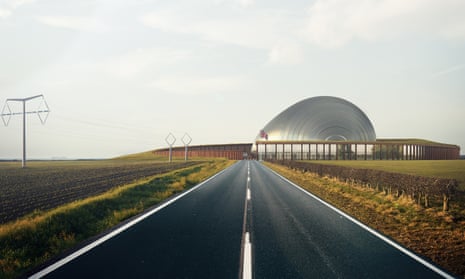Rolls-Royce says it can create 6,000 UK jobs within five years if the government backs its plans to build small nuclear reactors around the country.
The engineering company is part of a consortium that is pushing for the government to commit billions of pounds to build 16 of the small modular reactors (SMRs) around the UK.
The factory-built nuclear power stations are predicted to provide up to 440MW of electricity each, enough to power a city of 450,000 homes over a planned lifespan of 60 years.
The UK SMR Consortium, which also includes the building company Laing O’Rourke and the National Nuclear Laboratory, among others, said the reactors can play a major part in the UK’s efforts to fight the climate crisis with zero direct emissions, as well as boosting UK exports. However, it faces opposition on the grounds of safety, security and cost.
The consortium this week signed agreements with the US company Exelon Generation and the Czech power company CEZ to consider the reactors.
Small nuclear reactors were first developed in the 1950s to use in nuclear-powered submarines. Since then Rolls-Royce has designed reactors for seven classes of submarine and two separate land-based prototype reactors.
However, to be cost-effective for civilian use the power generated by the reactors has to compete with renewable sources such as wind and solar power. The costs of installing renewables have fallen dramatically in the last decade and they do not pose the same safety concerns.
The Financial Times last month reported that the government was backing the plans to commit between £1.5bn and £2bn, and that it would form part of Boris Johnson’s 10-point plan for the environment. However, the second wave of coronavirus has caused the delay of the Treasury’s multiyear spending review.
Proponents argue the plants could be built in factories and then rapidly and cheaply assembled where needed around the UK. An independent review in 2018 said the government should back the plans but a 2017 study by the consortium partner Atkins found that the electricity produced from the small reactors would be a third more expensive than traditional plants.
Tom Samson, the interim chief executive of the UK SMR Consortium, said: “We have developed a manufacturing and assembly process that will make reliable, low-carbon nuclear power affordable, deliverable and investable.
“By creating a factory-built power station that rolls off the assembly line we have radically reduced many construction risks associated with new nuclear power stations; and by using proven nuclear technology alongside standardised and simplified components, we make it much more cheaply.”









